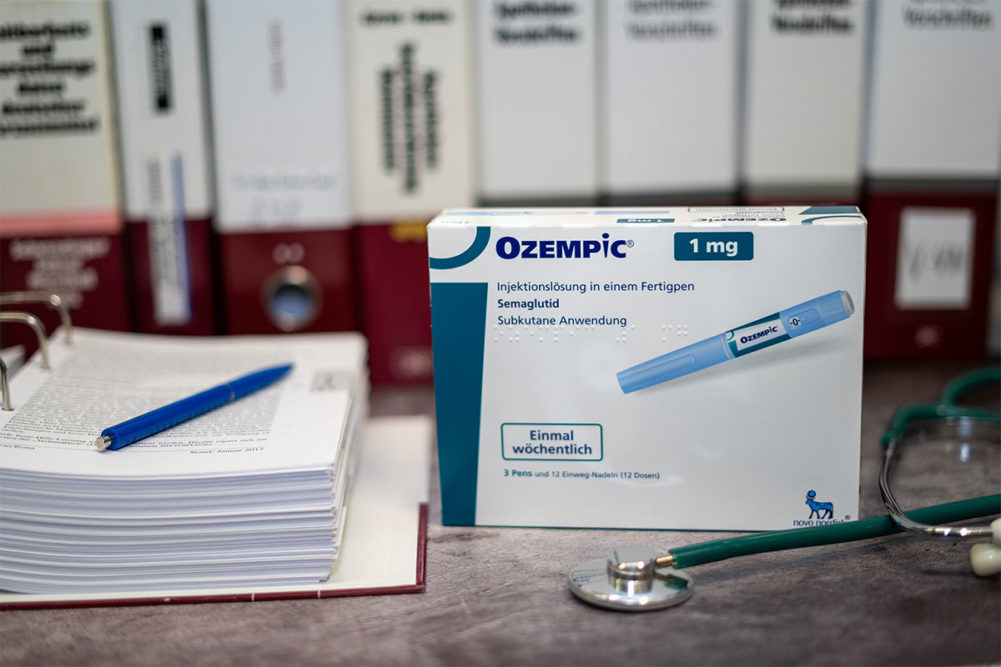KANSAS CITY — To judge by the buzz, the impact on the food industry of the growing popularity of GLP-1 drugs will be nothing short of seismic.
 Josh Sosland, editor of Milling & Baking News.
Josh Sosland, editor of Milling & Baking News.Source: Sosland Publishing Co.
Numerous media outlets have published stories with menacing headlines for the food industry, including — CNN: “Ozempic is on the rise. That could be a problem for food companies”; The Wall Street Journal: “America’s Food Giants Confront the Ozempic Era”; and Bloomberg: “Ozempic is making people buy less food, Walmart says.”
It’s not just the media. One stock analyst recently slashed the price target for Krispy Kreme, Inc. because of the surging popularity of the drugs.
With brand names that include Ozempic, Wegovy, Trulicity, Rybelsus and Mounjaro, GLP-1 drugs are prescribed for type 2 diabetes and, more recently, for obesity and work by activating receptors in the pancreas leading to increased insulin production and reduced appetite.
Sales growth of the drugs has been and remains impressive. Novo Nordisk A/S, the market leader in the GLP-1 class of drugs with just over a 50% market share, said its obesity care sales were up 174% in the first nine months of 2023, mostly driven by US demand. US sales of GLP-1 drugs by Novo in the most recent quarter equated to about $2.5 billion per month.
Agitation over the potential impact of the medications has been exacerbated by surveys showing tens of millions of respondents expressing an interest in a drug that could help them lose weight safely, and by estimates that those on the medication may consume much less food. In one-peer reviewed study, subjects taking GLP-1 consumed 35% fewer calories than subjects given a placebo.
Executives from some of the largest food companies have been asked about the effects of the drug on their businesses, and many have weighed in on the subject. Robert B. Quincey, chairman and chief executive officer of Coca Cola Co., said “It is an area that we are very focused on.” He projected confidence, concluding that Coke is well positioned with what he called a “total beverage strategy” that includes both caloric and sugar-free beverages.
Ulf Mark Schneider, CEO of Nestle SA, similarly said its brands such as Boost and Optifast may benefit from a possible increase in the number of consumers seeking fortified foods because they are consuming fewer calories. At the same time, he cautioned that demand for confectionery products and perhaps ice cream may be adversely affected.
Like most executives asked about the subject, neither Mr. Quincey nor Mr. Schneider tried to quantify the effects the medications may have.
One executive who offered a sense of the prospective effects of GLP-1 drugs on his company’s business, particularly snacks, was Dirk Van de Put, chairman and CEO of Mondelez International, Inc.
Saying he has examined the topic closely, Mr. Van de Put in a Nov. 1 conference call concluded the subject has been “overblown.”
“We do estimates, we do projections, we talk to pharmaceutical companies, we talk to consumers and so on,” he said. “So, we’re staying close to the subject.”
In the long run, 10 years down the road, he said current analysis suggests a worst-case scenario would be an adverse effect on volume of between 0.5% and 1%.
“That assumes quite significant adoption rates of the drug,” he said.
The market for the medications is still developing, and Mr. Van de Put conceded the possibility that the impact may be greater than Mondelez’s current forecasts. As of late 2022, it was estimated that fewer than 3% of Americans were taking GLP-1. While growth remains strong, it is far from clear how many people will be able to afford and will choose to take the drug, which has some undesirable side effects, and how many fewer calories they will consume. For food executives to closely monitor this developing makes good sense. Overreacting does not.






